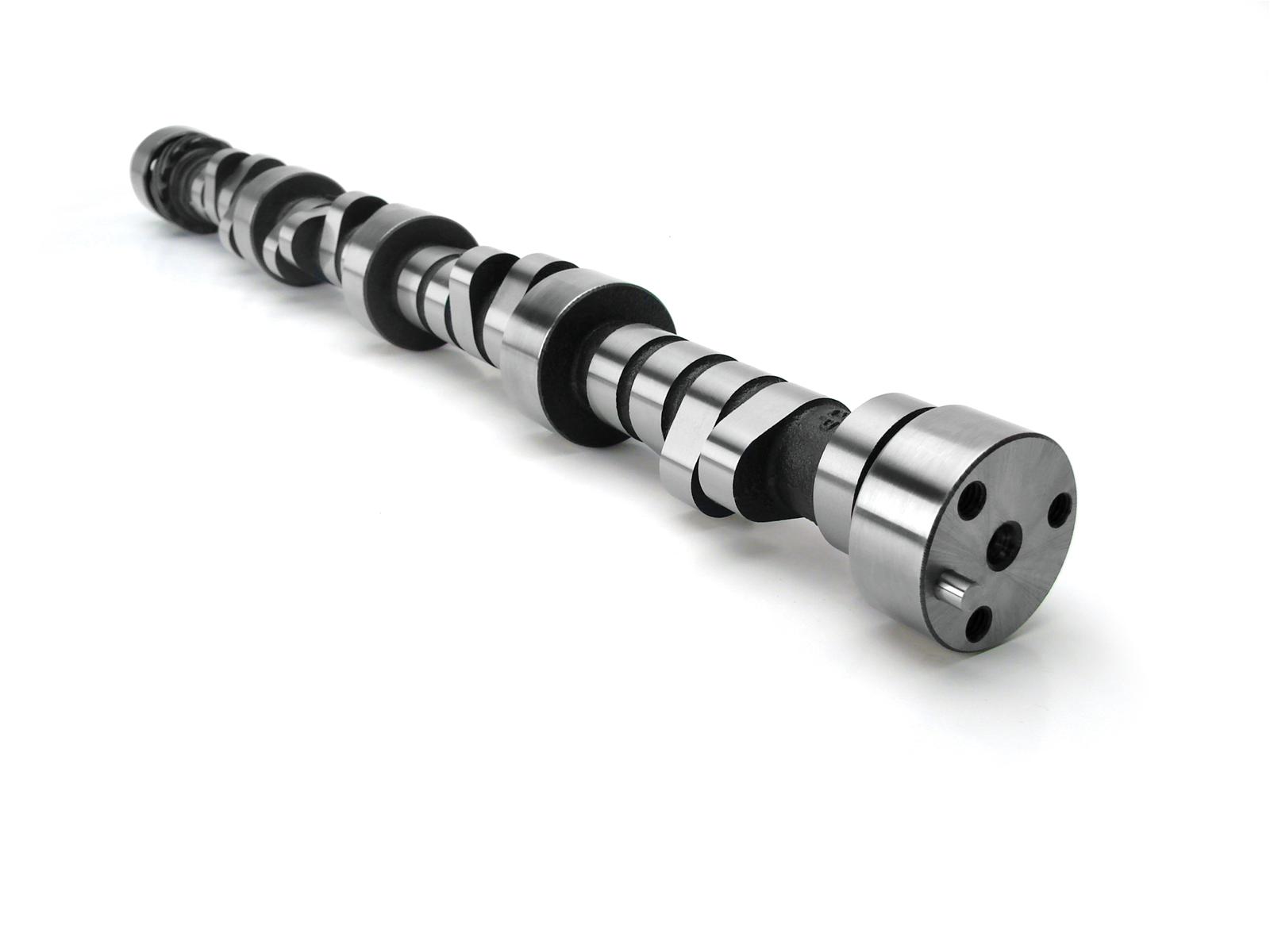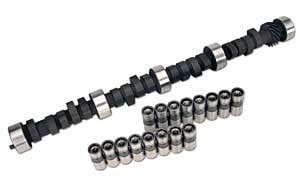

This would serve to improve engine efficiency through reduced friction and reduce the engine's oil consumption, while also promoting cleaner emissions. Tight construction tolerances were used in shaping the engine's cylinder bores with narrow piston rings fitted to the engine's pistons. In the interest of reducing overall engine weight, aluminum-alloy heads and pistons would be standard and all major engine accessories would be mounted directly to the block, resulting in a more complex block casting but eliminating the need for heavy mounting brackets. The engine would utilize features such as a chain-driven, single-overhead camshaft valvetrain with roller finger followers, a deep-skirt cast-iron block construction and cross-bolted main bearings, all benefitting long-term durability. This square configuration was chosen primarily for its positive noise, vibration and harshness characteristics. The initial engine design would implement a 90° vee-angle with a bore and a stroke of 3.552 in × 3.543 in (90.2 mm × 90.0 mm), resulting in a 4,601 cc (4.6 L 280.8 cu in) displacement and creating a nearly 1:1 bore-to-stroke ratio.


Ĭlarke and his engineers studied engine designs from major European and Japanese automakers and sought to develop a V8 that was technologically advanced and power-dense, yet also dependable with no major service required before 100,000 miles of use. The objective was to develop a new V8 engine that would surpass Ford's earlier V8s in every meaningful way, from power and efficiency to emissions performance and smoothness of operation.
Voodoo cam 350 update#
In the second half of the 1980s, Petersen, now chief executive officer, sought to update Ford's decades-old V8 architectures, challenging Ford senior engineer Jim Clarke to do for Ford's V8s what Jack Telnack did for Ford's vehicle design. The result was an abandonment of the boxy styling that had dominated Ford products for years and the adoption of sleeker, more aerodynamic designs like that used for the highly successful Ford Taurus. In the early 1980s, then-Ford Motor Company chief operating officer Donald Petersen challenged Ford's vice-president of design, Jack Telnack, and his staff to come up with new vehicle designs that they could take pride in.


 0 kommentar(er)
0 kommentar(er)
